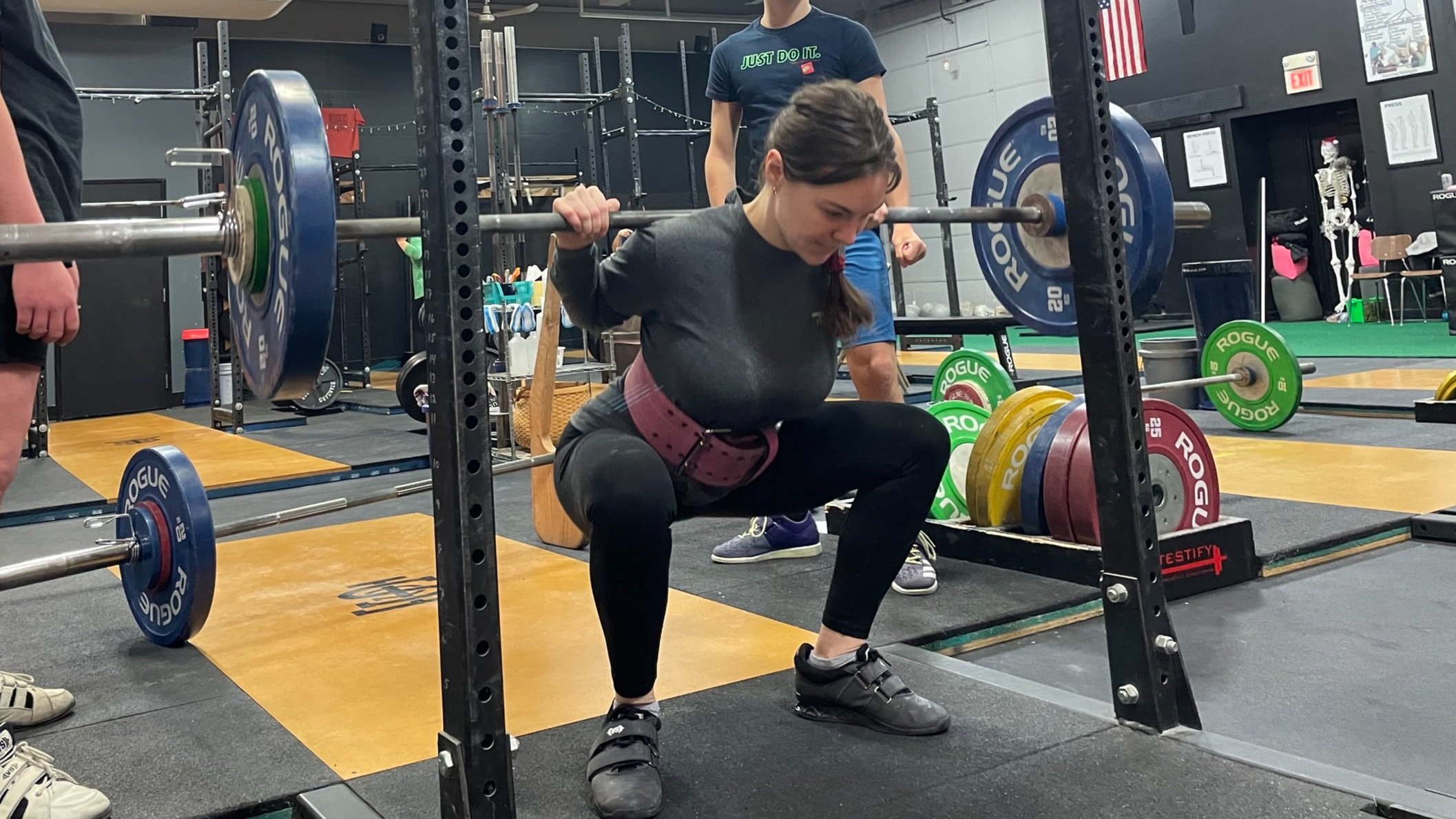DIY Lifting Platform - Easy and Fast!
/Let’s build a lifting platform . . . fast. We’ve got the steps below, and be sure to watch the included videos to see the process in action.
Why You Should Have a Lifting Platform
You want a lifting platform for several reasons - first, it protects your equipment. Specifically, it protects your plates and the floor from chipping, cracking, and/or breaking due to deadlifting, cleaning, snatching, rowing, etc. Second, it’s great for noise and vibration dampening, which is important when you’re lifting while your 2-year-old is sleeping, and it’s also important so that you don’t annoy your neighbors. Finally, a platform is useful for safety - it clearly delineates your lifting space. When you’re on the platform, it says, “Hey, this is someone’s lifting space - stay off the platform.”
How to Build It
“Build” is an aggressive term. Putting together a platform is pretty simple - so much so that “assemble” is probably more appropriate. Here we go:
Step 1: Base Layer
Take two ¾” x 4’ x 8’ sheets of OSB and set them down on the floor side-by-side. These sheets run lengthwise, i.e., “front-to-back” in terms of your platform’s orientation (Figure 1).
Note: These sheets are commonly referred to as ¾” thick, but the actual thickness is 23/32” and will be listed that way at the lumber store.
IMPORTANT: Most sheets have a slight bow or “crown” to them. When setting them down, be sure that the crown is up. In other words, you want the sheet to make a hill, not a valley. If you do this, the weight of the entire platform itself helps remove any bowing from the final product.
Step 2: Middle Layer
Take two more ¾” x 4’ x 8’ sheets of OSB and set them on top of the base layer so that they run perpendicular to the base layer’s sheets, i.e., “side-to-side” in terms of your platform’s orientation (Figure 2). Attach the middle layer to the base layer using 1 ¼” screws - we use 3 screws along the short edge of each sheet and 4 screws along the long edge of each sheet.
Step 3: Top Layer - MDF
Take a ¾” thick sheet of MDF and cut it so that it’s 96” x 42” (i.e., 8’ x 3.5’). MDF comes in 97” x 49” sheets, and you can either have your lumber supplier do it for you (Lowe’s typically does this for free), or you can do it yourself. We like MDF as it’s relatively heavy, sits nice and flat, and because of this, it helps remove any bowing from your platform. With that said, you can also use something nicer like oak for the top layer.
Using 1 ⅝” screws, attach the MDF to the middle layer so that it’s perpendicular to that layer (i.e., the MDF will run “front-to-back”) and centered. The MDF should sit so that it’s 27” in from either side of the platform. We use 3 screws down each long edge for a total of 6 screws. Be sure that the screws are slightly countersunk so that you don’t damage your plates if you accidentally set the bar down a bit off-center.
Step 4: Top Layer - Horse Stall Mats
Get three ¾” x 4’ x 6’ rubber horse stall mats. Ideally, you want mats without any type of pattern or texture on them, but if they are dimpled on the bottom, it’s not the end of the world. Using a jig saw (watch the video), cut two 72” x 27” pieces (i.e., 6’ x 2’3”) and two 24” x 27” pieces (i.e., 2’ x 2’3”). Thus, you now have two long pieces and two short pieces of horse stall mat.
Set one long piece and one short piece on the left side of the MDF and repeat the process on the right side of the MDF (Figure 3). Make sure the rubber mats fit tight and snug up against the MDF as well as each other, then attach the mats to the middle layer using 1 ⅝” screws (Figure 4), and again, be sure to countersink them slightly. We put screws around the outside, front, and back edges of the mats. However, don’t put screws on the edge near the MDF - this will help ensure that you don’t accidentally set your plates down on a screw that’s a bit proud.
There you have it - your very own lifting platform. It’s easy, it’s quick, and it’s incredibly durable.
As always, we hope this helps you get stronger and live better.
-Phil
PS: Whenever you want even more Testify in your life, here are some free resources:
Book a free intro and strategy session with us HERE.
Pick up a free copy of Testify’s Squat Guide: 12 Tips to Improve Your Squat Now HERE.
Get our free weekly email - containing useful videos, articles, and training tips - HERE.
Follow Testify on Instagram HERE.
Subscribe to Testify’s YouTube channel HERE.
(Some links may be affiliate links. As an Amazon Associate, Testify earns from qualifying purchases.)









